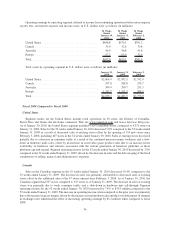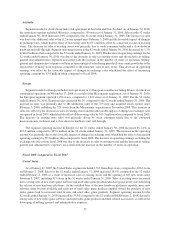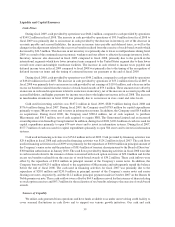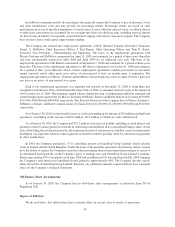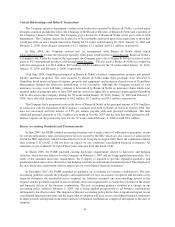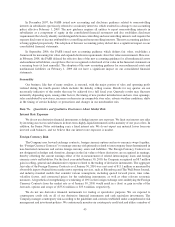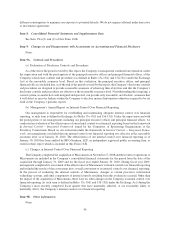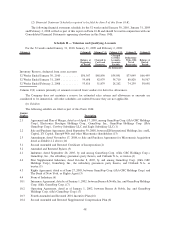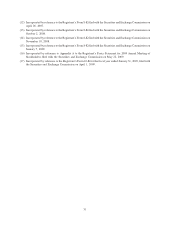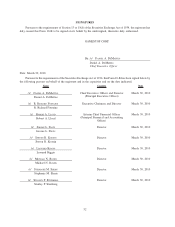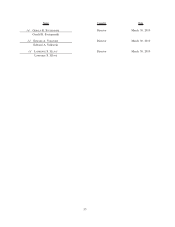GameStop 2009 Annual Report Download - page 59
Download and view the complete annual report
Please find page 59 of the 2009 GameStop annual report below. You can navigate through the pages in the report by either clicking on the pages listed below, or by using the keyword search tool below to find specific information within the annual report.
Certain Relationships and Related Transactions
The Company operates departments within seven bookstores operated by Barnes & Noble, a related party
through a common stockholder who is the Chairman of the Board of Directors of Barnes & Noble and a member of
the Company’s Board of Directors. The Company pays a license fee to Barnes & Noble on the gross sales of such
departments. The Company deems the license fee to be reasonable and based upon terms equivalent to those that
would prevail in an arm’s length transaction. During the 52 weeks ended January 30, 2010, January 31, 2009 and
February 2, 2008, these charges amounted to $1.1 million, $1.3 million and $1.2 million, respectively.
In May 2005, the Company entered into an arrangement with Barnes & Noble under which
www.gamestop.com became the exclusive specialty video game retailer listed on www.bn.com, Barnes & Noble’s
e-commerce site. Under the terms of this agreement, the Company pays a fee to Barnes & Noble for sales of video
game or PC entertainment products sold through www.bn.com. The fee paid to Barnes & Noble in connection
with this arrangement was $0.4 million, $0.5 million and $0.4 million for the 52 weeks ended January 30, 2010,
January 31, 2009 and February 2, 2008, respectively.
Until June 2005, GameStop participated in Barnes & Noble’s workers’ compensation, property and general
liability insurance programs. The costs incurred by Barnes & Noble under these programs were allocated to
GameStop based upon total payroll expense, property and equipment, and insurance claim history of GameStop.
Management deemed the allocation methodology to be reasonable. Although the Company secured its own
insurance coverage, costs will likely continue to be incurred by Barnes & Noble on insurance claims which were
incurred under its programs prior to June 2005 and any such costs applicable to insurance claims against GameStop
will be allocated to the Company. During the 52 weeks ended January 30, 2010, January 31, 2009 and February 2,
2008, these allocated charges amounted to $0.2 million, $0.2 million and $0.3 million, respectively.
The Company had a promissory note in the favor of Barnes & Noble in the principal amount of $74.0 million,
in connection with the repurchase of the Company’s common stock held by Barnes & Noble in October 2004. The
note was unsecured and bore interest at 5.5% per annum, payable with each principal installment. The final
scheduled principal payment of $12.2 million was made in October 2007 and the note has been satisfied in full.
Interest expense on the promissory note for the 52 weeks ended February 2, 2008 totaled $0.4 million.
Recent Accounting Standards and Pronouncements
In June 2009, the FASB codified accounting literature into a single source of authoritative principles, except
for certain authoritative rules and interpretive releases issued by the SEC which are also sources of authoritative
GAAP for SEC registrants, which became effective for our Company in August 2009. Since the codification did not
alter existing U.S. GAAP, it did not have an impact on our condensed consolidated financial statements. All
references to pre-codified U.S. GAAP have been removed from this Form 10-K.
In March 2008, the FASB amended existing disclosure requirements related to derivative and hedging
activities, which became effective for the Company on February 1, 2009 and are being applied prospectively. As a
result of the amended disclosure requirements, the Company is required to provide expanded qualitative and
quantitative disclosures about derivatives and hedging activities in each interim and annual period. The adoption of
the new disclosure requirements had no impact on our consolidated financial statements.
In December 2007, the FASB amended its guidance on accounting for business combinations. The new
accounting guidance amends the principles and requirements for how an acquirer recognizes and measures in its
financial statements the identifiable assets acquired, the liabilities assumed, any noncontrolling interest in the
acquiree and the goodwill acquired. It also establishes disclosure requirements to enable the evaluation of the nature
and financial effects of the business combination. The new accounting guidance resulted in a change in our
accounting policy effective February 1, 2009, and is being applied prospectively to all business combinations
subsequent to the effective date. The adoption of this new accounting policy did not have a significant impact on our
consolidated financial statements and the impact that its adoption will have on our consolidated financial statements
in future periods will depend on the nature and size of business combinations completed subsequent to the date of
adoption.
44




